Comprehensive Guide to Ubiquitous Computing: Impact & Future

Understanding Ubiquitous Computing: An In-Depth Guide
Ubiquitous computing represents a paradigm shift in how we perceive and interact with technology. It's a move away from the era of personal computing, where interaction is primarily through a single device, to a world where computing is integrated into every aspect of our environment. Let's explore this concept and its evolution in more detail.
What is Ubiquitous Computing?
Ubiquitous computing, or 'ubicomp,' integrates computing capabilities into everyday objects and activities. It's about embedding microprocessors in everyday objects, allowing them to communicate information and take intelligent actions without human intervention. The essence of ubiquitous computing lies in its ability to be present everywhere while being invisible or unobtrusive to users.
The Concept of Ubiquitous Computing
The core idea behind ubiquitous computing is to make devices "disappear" into the background. This doesn't mean the physical disappearance of devices but their seamless integration into our daily lives to the point where their presence is almost imperceptible. In a ubiquitous computing world, technology serves us by being everywhere yet non-intrusive. It's about technology adapting to our needs rather than us adapting to technology.
For example, imagine your home dynamically adjusting lighting, temperature, and playing music based on your preferences and the time of day, without any explicit input from you. This level of integration aims to enhance our living and working environments, making them more responsive to our needs.
The Evolution of Ubiquitous Computing
The evolution of ubiquitous computing can be traced back to the pioneering ideas of Mark Weiser in the late 1980s and early 1990s. He envisioned a future where computers would be so embedded in our environments that they would become indistinguishable from it. Since then, this concept has evolved significantly, fueled by advancements in various technologies.

Sensor Technology: The proliferation of sensors has been crucial. Sensors detect and respond to changes in the environment, enabling devices to collect data and act autonomously.
Internet of Things (IoT): IoT is a prime example of ubiquitous computing. It describes a network of interconnected devices communicating and coordinating actions to improve efficiency and user experiences.
Artificial Intelligence (AI) and Machine Learning (ML): AI and ML empower devices to learn from data, make decisions, and carry out actions without human direction, enabling more sophisticated and personalized ubiquitous computing experiences.
Cloud Computing: Cloud technology provides the backbone for ubiquitous computing by offering the necessary computational power and storage solutions. It enables devices to access and share resources in real time, enhancing their capabilities.
Over the years, these technologies have converged to make ubiquitous computing more practical and impactful. Today, it's not just a concept but a reality that influences various sectors, including healthcare, transportation, and home automation. As we look to the future, the continued evolution of these technologies promises even more advanced and integrated, ubiquitous computing solutions, driving us toward a world where technology and human experience are seamlessly intertwined.
Pervasive Computing and the Internet of Things
Pervasive computing and the Internet of Things (IoT) are often discussed with ubiquitous computing, as they share the core principle of embedding intelligence into our everyday environment. While pervasive computing focuses on the widespread integration of computing systems into the physical world, IoT brings this concept to life by connecting everyday objects to the internet, enabling them to send and receive data.
How Pervasive Computing Relates to IoT
Pervasive computing is the foundation upon which IoT operates. It's the broad concept of technology being omnipresent, embedded in our surroundings to make computing available wherever and whenever it's needed. IoT is a manifestation of this concept, illustrating how objects can be networked together to form intelligent systems that interact with users and with each other.
The Synergy Between Pervasive Computing and IoT
The synergy between pervasive computing and IoT lies in their mutual goal to enhance the efficiency and convenience of our daily activities. By connecting devices to the internet, IoT allows for the remote monitoring and management of systems, from home appliances to city infrastructures, thereby extending the reach of pervasive computing.
Key Components of Ubiquitous Computing
To understand ubiquitous computing's full scope, it's crucial to identify its key components. These elements work together to create the seamless, intelligent, and user-centric experiences that define this computing paradigm.
- Sensors and Actuators: Sensors collect data from their environment, while actuators respond with actions based on computed decisions. These components are essential for gathering the contextual information necessary for intelligent decision-making.
- Connectivity: This involves the various networking technologies that enable communication between devices, including traditional Wi-Fi, Bluetooth, and newer protocols designed for IoT devices.
- Data Processing: Once data is collected, it needs to be processed. This can happen on the device itself (edge computing) or in the cloud. Ubiquitous computing relies on sophisticated data processing algorithms, often leveraging AI and machine learning, to make sense of the vast amounts of collected data.
- User Interface: The interface in ubiquitous computing is often not a traditional screen or keyboard. It could be voice-controlled, gesture-based, or entirely invisible, operating autonomously based on learned or programmed user preferences.
- Software: The software in ubiquitous computing systems is what ties the hardware components together. It includes the operating systems, applications, and protocols that allow devices to function and communicate effectively.
By integrating these components, ubiquitous computing systems can anticipate and respond to our needs, creating environments that adapt to us, enhancing our comfort, productivity, and well-being. Understanding these components offers a clearer perspective on how ubiquitous computing operates and its potential to transform our interaction with technology.
Layers of Ubiquitous Computing
Ubiquitous computing can be conceptualized in layers, each serving a distinct function but working together to create a cohesive, intelligent environment. These layers facilitate the seamless integration of computing capabilities into our daily lives, ensuring that technology serves us intuitively and efficiently.
Layer 1: The Task Management Layer
The task management layer is pivotal in the structure of ubiquitous computing, acting as the interface where users and technology meet. This layer is responsible for interpreting user commands, preferences, and behaviors, translating them into actionable tasks that can be executed by the system.
Functions of the Task Management Layer:
- User Interaction: This layer handles user inputs, which can range from direct commands to indirect cues based on user behavior or context.
- Task Interpretation: It interprets these inputs, determining the appropriate response or action that the system should execute.
- Task Allocation: Once a task is defined, this layer is responsible for assigning it to the appropriate resources or devices within the system.
This layer ensures that user needs and commands are understood and acted upon, making the experience of interacting with ubiquitous computing systems intuitive and seamless.
Layer 2: The Environment Management Layer
The environment management layer serves as the system's brain, processing information and managing the interactions between various devices and components. It's crucial for maintaining the harmony and efficiency of the ubiquitous computing environment.
Functions of the Environment Management Layer:
- Data Integration: This layer collates and analyzes data from various sources, ensuring a coherent understanding of the environment.
- Resource Management: It manages the resources and capabilities of different devices, optimizing their performance and interaction.
- Context Awareness: This layer can help make informed decisions by understanding the context and adapting the system's behavior to suit current needs or conditions.
This layer's ability to integrate and manage information is key to delivering personalized and contextually relevant user experiences.
Layer 3: The Environment Layer
The environment layer is the foundational tier, consisting of the physical devices and sensors that populate the ubiquitous computing system. It's the layer where the actual sensing and acting take place, interfacing directly with the physical world.
Functions of the Environment Layer:
- Sensing: Devices and sensors in this layer collect data from the environment, providing the raw input needed for the system to understand its context.
- Actuation: Based on instructions from the upper layers, devices in this layer execute actions, influencing the environment directly.
This layer is essential for the system's ability to interact with and affect the physical world, providing the sensory and action capabilities that underpin the entire ubiquitous computing ecosystem.
Essential Aspects of Ubiquitous Computing
Ubiquitous computing is a multifaceted domain characterized by several essential aspects that define its functionality and purpose. These aspects, from the Internet of Things (IoT) to mobile ubiquitous computing, represent the different dimensions through which ubiquitous computing permeates our lives.
.jpeg)
Internet of Things (IoT)
The Internet of Things stands as a cornerstone of ubiquitous computing, illustrating a world where physical objects are interconnected and infused with intelligence. In the IoT realm, everyday items gain the ability to communicate, analyze, and act upon data. This interconnectedness not only enhances the functionality of individual devices but also enables them to work in concert, creating a more integrated and intelligent environment. For example, in a smart home, IoT devices ranging from thermostats to refrigerators can interact, learning from user behavior and environmental conditions to optimize comfort and efficiency.
Pervasive Computing
Pervasive computing echoes the ethos of ubiquitous computing, where technology is ingrained into the fabric of the environment, offering services and information that are always accessible yet unobtrusive. It's about creating a computing landscape that is so naturally intertwined with our surroundings that it becomes indistinguishable from them. Pervasive computing isn't just about having access to computing resources anywhere but about ensuring that this access is seamless, intuitive, and inherently supportive of the user's needs and activities.
Mobile Ubiquitous Computing
While ubiquitous computing envisions technology that is everywhere, mobile ubiquitous computing emphasizes the personal and portable aspect of this vision. It extends the reach of ubiquitous computing beyond stationary environments to mobile contexts, allowing users to carry intelligent connectivity with them. Mobile devices serve as a bridge, connecting the user to the broader network of ubiquitous computing resources. They adapt, respond, and provide continuity in user experience, regardless of location or movement, ensuring that the benefits of ubiquitous computing are ever-present and accessible.
Integration of Technology into Everyday Life
The integration of technology into everyday life is a hallmark of ubiquitous computing. This aspect focuses on embedding computational capabilities into our daily environments, making interactions with technology more natural and intuitive. Unlike conventional computing, where technology often demands our focused attention, ubiquitous computing weaves technology into the background of our activities.
This integration is evident in various applications, from smart homes and workplaces to connected cities and wearable devices. For instance, in a smart home, technology adjusts to the inhabitants' routines and preferences, controlling lighting, temperature, and entertainment systems without explicit user commands. This seamless integration aims to enhance convenience, efficiency, and personalization, making technology an unobtrusive yet integral part of our daily routines.
Real-time Data Processing and Communication
Real-time data processing and communication are vital in ubiquitous computing, enabling systems to respond promptly and appropriately to changes in the environment or user needs. This aspect ensures that data collected from various sources is analyzed and acted upon instantaneously, facilitating a dynamic and responsive interaction between users and technology.
In ubiquitous computing, real-time processing allows for immediate adaptation to new information, whether it's adjusting traffic flow in a smart city, personalizing a shopping experience in a retail environment, or optimizing energy consumption in a smart grid. The ability to process and communicate data in real-time is what makes ubiquitous computing systems truly responsive and intelligent, capable of anticipating and catering to users' needs without delay.
Context Awareness and User Experience
Context awareness in ubiquitous computing refers to the system's ability to sense, interpret, and respond to environmental cues and user behaviors. This capability allows computing devices to offer personalized and adaptive services, enhancing the user's interaction with technology. Ubiquitous computing systems can provide more relevant and timely information, services, and assistance by understanding the context, such as location, time, user activity, or even emotional state.
For instance, a context-aware mobile app might adjust its suggestions and notifications based on whether the user is at work, home, or traveling. In a smart home, the system could recognize the presence of guests and adjust lighting and temperature settings accordingly. This sensitivity to context enriches user experience, making interactions with technology more intuitive and aligned with individual preferences and current circumstances.
Enhancing User Experience and Connectivity
The goal of ubiquitous computing is not just to provide computing capabilities everywhere but also to enhance user experience and connectivity. This enhancement is achieved by creating an ecosystem of interconnected devices and services that anticipate user needs and streamline interactions. Improved connectivity ensures that users can access information and services whenever and wherever needed, without the friction often associated with traditional computing paradigms.
Enhancing user experience in ubiquitous computing involves simplifying interactions, reducing cognitive load, and providing services that are both timely and contextually relevant. It's about creating a user-centered computing environment that adapts to the user rather than the other way around. This approach fosters a more natural and efficient relationship between humans and technology, where the latter acts as a supportive and enhancing presence in daily activities.
Technologies Augmenting Ubiquitous Computing
The realization and advancement of ubiquitous computing are significantly driven by various underlying technologies. Sensor networks and the Internet of Things (IoT), along with cloud computing and big data, are foundational components that enable ubiquitous computing to seamlessly integrate into our daily lives, enhancing its functionality and scope.
Sensor Networks and IoT
Sensor networks, a critical element of the IoT, play a pivotal role in ubiquitous computing by providing the essential data needed for these systems to operate intelligently and autonomously. These networks consist of spatially distributed autonomous sensors that monitor physical or environmental conditions, such as temperature, sound, pressure, or motion, and cooperatively pass their data through the network to a main location.
In ubiquitous computing, these sensors are the touchpoints between the digital and the physical worlds. They enable environments to perceive and interact with their occupants. For example, in smart buildings, sensor networks can monitor environmental conditions and occupancy, adjusting heating, cooling, and lighting automatically to optimize comfort and energy efficiency.
The integration of sensor networks with IoT devices amplifies the capabilities of ubiquitous computing. By connecting sensors to the internet, the data they collect can be shared, analyzed, and acted upon in real time, enabling more responsive and adaptive systems that can cater to the specific needs of users and their environments.

Cloud Computing and Big Data
Cloud computing and big data are two interrelated technologies that significantly enhance the potential of ubiquitous computing. Cloud computing provides the infrastructure and computational power necessary to process and store the vast amounts of data generated by ubiquitous computing systems, while big data analytics enables the extraction of meaningful insights from this data.
Cloud computing offers scalable and flexible resources that ubiquitous computing systems can leverage to perform intensive computational tasks without being limited by local hardware constraints. This flexibility allows for more complex and intelligent processing, which is essential for the adaptive and responsive nature of ubiquitous computing.
Big data analytics, on the other hand, processes and analyzes the large volumes of data collected by sensors and devices. By applying machine learning and advanced analytics, patterns and insights can be gleaned, enabling the system to predict behaviors, adapt to changes, and provide personalized services. For instance, in a smart city context, big data analytics can help optimize traffic flow, enhance public safety, and improve energy distribution based on real-time data and historical trends.
Together, cloud computing and big data provide the backbone for ubiquitous computing, allowing it to scale, adapt, and become increasingly intelligent over time. These technologies enable ubiquitous computing systems to handle the complexity and dynamism of the real world, making them more relevant, efficient, and user-centric.
Wearable Technology and Smart Devices
Wearable technology and smart devices epitomize the concept of ubiquitous computing by embedding computing power into objects intimately connected to our daily lives. These technologies bridge the gap between the digital and physical worlds, offering a more natural and intuitive way to interact with technology.
Wearable Technology
Wearable technology includes devices like smartwatches, fitness trackers, smart glasses, and even smart clothing. These devices are designed to be worn throughout the day, providing continuous interaction and data exchange. They collect a wealth of personal data, from health metrics to location information, which can be used to offer tailored services and insights to the user.
For instance, a smartwatch can track a user's physical activity, heart rate, and even sleep patterns, providing personalized health recommendations and alerts. Moreover, wearable devices can serve as a seamless extension of other computing systems, offering notifications, remote control capabilities, and real-time data access, all from the user's wrist or field of vision.
Smart Devices
Smart devices extend beyond wearables to include a wide range of objects imbued with computing capabilities. This category encompasses everything from smartphones and tablets to smart home appliances and connected vehicles. These devices are characterized by their ability to connect to the internet and other devices, enabling them to operate autonomously or be controlled remotely.
In a ubiquitous computing environment, smart devices often serve as interaction nodes, collecting user input and environmental data, processing it, and performing actions based on predefined conditions or user commands. For example, a smart thermostat can learn a user's preferences over time and adjust the home's temperature automatically, while a connected car can optimize its route based on traffic conditions.
Wearable technology and smart devices are fundamental to realizing the vision of ubiquitous computing. By integrating computing capabilities into personal and everyday objects, they facilitate a more personalized and context-aware interaction with technology, enhancing user convenience, efficiency, and overall experience.
Applications of Ubiquitous Computing
Ubiquitous computing, with its vast array of technologies and capabilities, finds applications in numerous sectors, significantly transforming operations, enhancing efficiency, and creating new opportunities. Here, we explore how ubiquitous computing is revolutionizing logistics, e-commerce, and national security.
Logistics
In the logistics sector, ubiquitous computing plays a crucial role in streamlining operations and enhancing efficiency. By integrating sensors, IoT devices, and real-time data analytics, logistics companies can achieve unprecedented levels of transparency, speed, and reliability.
For instance, tracking systems powered by ubiquitous computing enable real-time monitoring of goods throughout the supply chain. Sensors can provide updates on the location, condition, and even the environment of the cargo, allowing companies to mitigate risks and respond proactively to any issues. Moreover, this technology enables predictive analytics, where data from various sources is analyzed to forecast potential delays or problems, facilitating preemptive solutions.
Warehouse operations also benefit significantly from ubiquitous computing. Automated inventory systems, guided by sensors and real-time data, can optimize storage, streamline picking processes, and reduce errors, leading to more efficient warehouse management and operations.
E-commerce
Ubiquitous computing is reshaping the e-commerce landscape by personalizing the shopping experience and enhancing customer engagement. Through data collected from various sources, e-commerce platforms can offer personalized recommendations, tailored advertisements, and dynamic pricing, all of which enhance the shopping experience and customer satisfaction.
Beyond personalization, ubiquitous computing also improves the operational aspects of e-commerce. Inventory management, logistics, and customer service benefit from the integration of IoT devices and real-time data processing. For example, smart inventory systems can automatically track stock levels, predict reordering points, and even initiate the restocking process, ensuring that supply always meets demand.
Customer service in e-commerce also gets a boost from ubiquitous computing, with chatbots and AI-driven support systems providing instant assistance to customers, answering queries, and resolving issues around the clock.
National Security
National security is another critical area where ubiquitous computing is making a significant impact. Surveillance and monitoring systems leverage sensor networks, advanced analytics, and real-time data processing to detect and respond to potential threats swiftly.
In border security, for instance, ubiquitous computing can enhance the monitoring of vast and challenging terrains. Sensors and connected devices can detect unauthorized entries or suspicious activities, providing real-time alerts to security personnel.
Furthermore, ubiquitous computing aids in cybersecurity, an increasingly important aspect of national security. By continuously monitoring network traffic and analyzing data patterns, systems can identify potential cyber threats, such as malware or unauthorized access attempts, enabling proactive measures to prevent attacks or mitigate their impact.
Home Automation
Home automation stands as a prime example of ubiquitous computing, where the integration of technology into residential environments enhances comfort, convenience, and energy efficiency. Through interconnected devices and systems, homes can adapt to the preferences and behaviors of their inhabitants, offering a personalized living experience.
In a smart home, various components such as lighting, heating, security, and entertainment systems can be controlled remotely or set to operate autonomously based on user habits or environmental conditions. For instance, a smart thermostat can learn the household's temperature preferences, adjusting settings automatically to maintain optimal comfort while optimizing energy use. Similarly, security systems can provide real-time alerts and surveillance, offering peace of mind to homeowners whether they are present or away.
Medical Technology
In the medical field, ubiquitous computing is revolutionizing patient care and healthcare management. Wearable devices and embedded sensors can continuously monitor patients' health metrics, providing critical data that can be used for early diagnosis, personalized treatment, and preventive healthcare.
Telemedicine, powered by ubiquitous computing, allows healthcare providers to offer consultations, diagnoses, and even some treatments remotely, making healthcare more accessible, especially in underserved or remote areas. Moreover, in hospitals, ubiquitous computing facilitates the tracking of medical assets, monitoring of patient conditions, and management of staff workflows, contributing to improved care quality and operational efficiency.
Self-driving Vehicles
Self-driving vehicles epitomize the application of ubiquitous computing in transportation. These vehicles integrate various sensors, data processing units, and communication technologies to navigate safely and efficiently without human intervention.
Autonomous vehicles use a combination of GPS, lidar, radar, and camera systems to perceive their environment, make informed decisions, and execute driving functions. This technology not only holds the promise of reducing traffic accidents caused by human error but also aims to optimize traffic flow, reduce congestion, and enhance the overall efficiency of transportation systems.

Military and Armed Forces
In the military and armed forces, ubiquitous computing enhances operational capabilities, improves situational awareness, and contributes to the safety and effectiveness of personnel. Through the integration of sensors, wearable devices, and advanced communication systems, soldiers can access real-time information about their environment, enabling better decision-making and strategic planning.
Drones and unmanned vehicles, equipped with sensors and autonomous capabilities, can perform reconnaissance missions, providing valuable intelligence without risking human lives. Wearable technology can monitor the health and status of soldiers, alerting medical teams to potential issues before they become critical. Additionally, smart bases leverage ubiquitous computing for security, logistics, and resource management, ensuring that operations run smoothly and efficiently.
User Feedback and Satisfaction
Ubiquitous computing plays a significant role in enhancing user feedback and satisfaction by providing more personalized, intuitive, and responsive experiences. Systems can adapt and improve in various applications, from smart homes to e-commerce, based on user interactions and feedback.
For instance, smart home devices can learn from user preferences to adjust settings automatically, while e-commerce platforms can tailor recommendations and services to individual users based on their behavior and feedback. This continuous loop of interaction and adaptation helps create systems that are more aligned with user needs and expectations, fostering a sense of satisfaction and loyalty.
Ubiquitous Computing in Everyday Life
The influence of ubiquitous computing in everyday life is profound, with its applications permeating almost every aspect of our daily routines. Smart home appliances adjust operations for energy efficiency, wearable devices help us monitor our health and stay connected, and smart cities optimize everything from traffic lights to waste management.
This pervasive integration of computing into our daily lives helps streamline tasks, improve efficiency, and provide a level of personalization and interactivity that was once the stuff of science fiction. As ubiquitous computing continues to evolve, it promises to blend the boundaries between technology and daily life, creating an environment where technology supports and enhances human experiences in intuitive and unobtrusive ways.
Impact on Various Industries and Sectors
Manufacturing
In manufacturing, ubiquitous computing facilitates the implementation of smart factories, where machinery and equipment are interconnected, enabling automated and optimized production processes. Real-time monitoring and predictive maintenance powered by ubiquitous computing can significantly reduce downtime, improve safety, and increase production efficiency.
Retail
The retail sector benefits from ubiquitous computing through enhanced customer experiences and operational efficiencies. Smart inventory management, personalized shopping experiences, and improved supply chain logistics are just a few examples of how this technology is transforming retail.
Agriculture
Ubiquitous computing is revolutionizing agriculture through precision farming. Sensors can monitor soil conditions, crop health, and environmental factors, allowing for precise irrigation, fertilization, and pest control, leading to increased productivity and sustainability.
Education Security
In education, ubiquitous computing can create more engaging and interactive learning environments. This technology transforms how educational content is delivered and consumed, from smart classrooms to personalized learning experiences based on real-time feedback.
Financial Services
The financial sector leverages ubiquitous computing for enhanced security, personalized customer services, and improved operational efficiency. Real-time data analysis and mobile banking services are examples of how this technology is being applied in the financial industry.
Transportation and Logistics
Ubiquitous computing is integral to the development of smart transportation systems, improving traffic management, enhancing safety, and reducing environmental impact. In logistics, it ensures more efficient supply chain management, real-time tracking, and predictive analytics for demand and delivery optimization.
Healthcare
In healthcare, ubiquitous computing is a game-changer, enabling remote patient monitoring, personalized treatment plans, and more efficient healthcare delivery. It also plays a crucial role in research, where large datasets can be analyzed to uncover trends and improve medical knowledge.
Environmental Monitoring
Ubiquitous computing is crucial for environmental monitoring, offering tools to track pollution levels, wildlife activities, and ecosystem changes. This data is vital for conservation efforts, policy-making, and understanding the impact of human activities on the planet.
Ubiquitous computing's applications span across various industries, driving innovation, improving efficiency, and creating more personalized and responsive services. As this technology continues to evolve, its influence on different sectors is expected to grow, further intertwining technology with every aspect of our professional and personal lives.
Advantages of Ubiquitous Computing
Ubiquitous computing offers a plethora of benefits that transform our interaction with technology, making it more integrated, intuitive, and indispensable. These advantages extend across various domains, improving efficiency, enhancing user experiences, and fostering innovation.
Benefits of Ubiquitous Computing

Enhanced Efficiency and Productivity
Ubiquitous computing automates routine tasks and optimizes operations, whether it's in a smart home, an industrial setting, or within a smart city. By delegating tasks to intelligent systems, individuals and organizations can focus on more strategic activities, boosting productivity and efficiency.
Improved Decision Making
With the vast amounts of data collected and analyzed by ubiquitous computing systems, individuals and organizations gain valuable insights that inform decision-making. Real-time data processing allows for immediate responses to changing conditions, enhancing the ability to make informed decisions quickly.
Personalization and User-Centric Services
Ubiquitous computing systems can adapt to individual user preferences and contexts, providing personalized experiences and services. Whether it's a smart home adjusting to its inhabitants' comfort levels or a health app providing customized advice, ubiquitous computing centers on the user's needs and preferences.
Increased Connectivity and Accessibility
Ubiquitous computing enables a higher level of connectivity, not just among devices but also between individuals and the information or services they need. This connectivity ensures that critical information and functionalities are accessible anytime and anywhere, enhancing convenience and accessibility.
Enhanced Safety and Security
In environments where safety and security are paramount, such as in homes, workplaces, or urban areas, ubiquitous computing can provide continuous monitoring and real-time alerts. This capability helps prevent accidents, deter crime, and ensure quick responses to emergencies.
Energy Efficiency and Sustainability
Ubiquitous computing contributes to sustainability by optimizing resource use, whether it's energy consumption in a smart building or material usage in manufacturing. Intelligent systems can make adjustments in real-time to reduce waste and enhance energy efficiency, supporting environmental sustainability goals.
Facilitation of Innovation
Ubiquitous computing serves as a catalyst for innovation, offering new possibilities for technology development and application. It encourages interdisciplinary collaboration and fosters the creation of novel solutions and services that address complex challenges in various sectors.
The benefits of ubiquitous computing are manifold, touching on aspects of efficiency, decision-making, personalization, connectivity, safety, sustainability, and innovation. As this technology continues to evolve and integrate into our daily lives and industries, its advantages are set to broaden, further embedding computing into the fabric of society.
Challenges and Future Directions
While ubiquitous computing offers significant benefits, it also presents challenges that need addressing to ensure its sustainable and ethical integration into society. Future advancements in the field are likely to focus on overcoming these challenges while harnessing the technology's full potential.
Advancements in Ubiquitous Computing
The future of ubiquitous computing is poised for exciting advancements, focusing on enhancing interoperability, scalability, and intelligence. Innovations will likely aim to streamline the integration of diverse devices and systems, ensuring seamless communication and functionality across various platforms and environments. Enhancing the AI and machine learning capabilities within ubiquitous systems will be crucial for improving context awareness, predictive analytics, and autonomous decision-making. Additionally, advancements in energy efficiency and miniaturization will support the deployment of more discreet and environmentally friendly devices.
Ethical Considerations and Privacy Concerns
Addressing ethical considerations and privacy concerns is paramount as ubiquitous computing becomes more ingrained in our daily lives. The pervasive nature of this technology, coupled with its ability to collect and analyze vast amounts of personal data, raises significant privacy issues. Ensuring that users have control over their data and that their information is used transparently and responsibly is essential.
Moreover, the potential for ubiquitous computing systems to make autonomous decisions that impact users' lives necessitates a focus on ethical programming and the implementation of safeguards to prevent bias and ensure fairness. Developing standards and regulations that guide the ethical use of ubiquitous computing technologies will be critical in maintaining user trust and upholding societal values.
Risk Assessment in Ubiquitous Computing
Ubiquitous computing environments is complex, with numerous interconnected devices and endpoints. This complexity necessitates advanced risk assessment strategies to identify potential vulnerabilities and threats. Cybersecurity insurance providers must consider the breadth of devices and their interactions, assessing risks not only at the individual device level but also in terms of network and system-wide implications.
Potential Benefits and Challenges for Society
Benefits
Ubiquitous computing can significantly enhance societal well-being by improving healthcare, education, environmental sustainability, and public safety. It offers the potential to create smarter cities with more efficient transportation, energy use, and waste management. In healthcare, real-time monitoring and personalized care can lead to better health outcomes and increased accessibility to medical services. Education can become more tailored and interactive, adapting to individual learning styles and needs.
Challenges
However, these benefits come with challenges. The pervasive nature of ubiquitous computing raises concerns about the digital divide, potentially exacerbating inequalities if access to technology is uneven. There's also the risk of over-reliance on technology, where failures or malfunctions could have widespread repercussions. Additionally, the impact on employment, with automation and AI potentially displacing workers in various sectors, calls for strategies to manage economic transitions and workforce re-skilling.
Security Concerns in Ubiquitous Computing
Security is a paramount concern in ubiquitous computing, given the extensive data collection and interconnectedness of systems. The more devices are connected, the greater the potential entry points for malicious actors. Ensuring the security of data in transit and at rest, safeguarding against unauthorized access, and maintaining system integrity are critical challenges.
- Data Security and Privacy: Protecting the vast amounts of personal and sensitive data collected by ubiquitous computing systems is crucial. This includes implementing robust encryption, secure authentication mechanisms, and data anonymization processes.
- Network Security: The interconnected nature of ubiquitous computing devices requires stringent network security measures to prevent unauthorized access and data breaches. This involves securing communication channels, employing intrusion detection systems, and regularly updating security protocols.
- Device Security: With a myriad of devices involved, each can be a potential vulnerability point. Ensuring that devices are secure, with up-to-date firmware and software, is essential to maintaining the overall security of ubiquitous computing ecosystems.
Overcoming Technical Hurdles
Interoperability
One of the key challenges is ensuring interoperability among a diverse array of devices and systems. As ubiquitous computing involves a vast ecosystem of interconnected devices, each potentially using different protocols and standards, developing universal or adaptable standards for communication and data exchange is crucial. This ensures that devices can seamlessly interact and collaborate, regardless of their manufacturers or underlying technologies.
Scalability
As more devices get connected, the systems must be designed to scale efficiently without a drop in performance or reliability. This involves not just scaling up the number of devices but also managing the increased complexity in data flows, processing, and storage. Ensuring that the infrastructure can handle growth and the dynamic nature of ubiquitous environments is essential for long-term sustainability.
Energy Efficiency
Many ubiquitous computing devices are battery-powered or require low energy consumption to be practical and sustainable. Enhancing energy efficiency, through both hardware optimization and energy-aware software algorithms, is vital. This includes developing more energy-efficient sensors, processors, and communication technologies, as well as designing systems that can intelligently manage their power usage based on context and necessity.
Data Management and Processing
With the sheer volume of data generated by ubiquitous computing systems, efficient data management and processing are paramount. This involves not only the ability to store and analyze large datasets but also the need for real-time processing capabilities. Techniques such as edge computing, where data is processed closer to where it is generated, can reduce latency, decrease bandwidth use, and improve response times.
Security and Privacy
As previously discussed, security and privacy are overarching concerns in ubiquitous computing. Developing robust security frameworks that can protect against a wide range of threats while maintaining user privacy is critical. This includes securing data at every stage, from transmission to storage, and ensuring that users have control over their data and how it's used.
User Interface and Experience
Creating intuitive and user-friendly interfaces for interacting with ubiquitous computing systems is crucial, especially as these systems become more integrated into daily life. The challenge lies in designing interfaces that are both accessible and effective across a diverse range of devices and contexts.
By addressing these technical hurdles, the field of ubiquitous computing can move forward, overcoming the barriers to its full potential and paving the way for more innovative, efficient, and user-centric applications. The future of ubiquitous computing lies in tackling these challenges head-on, ensuring that the technology can grow and evolve in a manner that benefits all users and stakeholders.
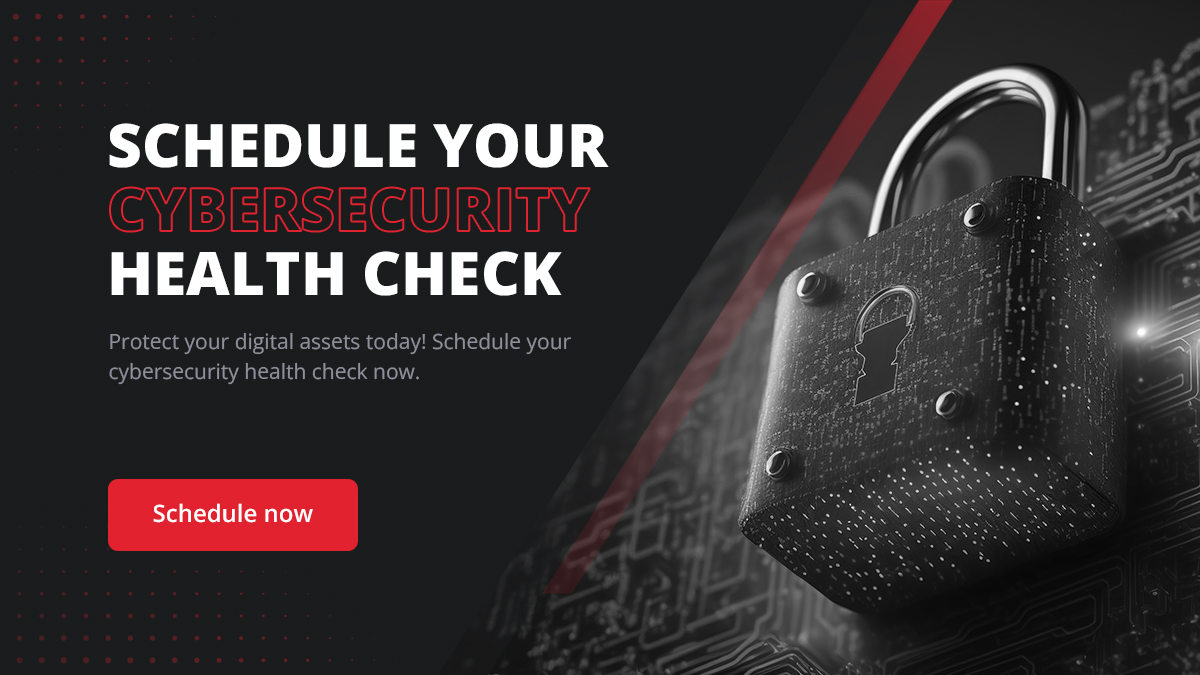
How Can Redzone Technologies Help Your Business with Security Concerns?
In an era where security threats are evolving and becoming more sophisticated, particularly in the context of ubiquitous computing, it's crucial for businesses to stay ahead with robust security measures. Redzone Technologies is positioned to assist businesses in fortifying their defenses against potential security threats, ensuring the integrity and confidentiality of their operations.
RedZone delivers thorough IT Security Assessment Professional Services to identify vulnerabilities and strengthen defenses.
Upgrade Your Security
Redzone Technologies offers a comprehensive suite of services designed to enhance your business's security posture. By upgrading your security with Redzone, you can expect a thorough assessment of your current security infrastructure, identifying vulnerabilities and areas for improvement. Redzone can implement advanced security measures, including end-to-end encryption, intrusion detection systems, and real-time monitoring services, ensuring that your data and systems are protected against emerging threats. A thorough evaluation of your security posture can be helpful to identify vulnerabilities and implement strategic improvements. Discover how our Cybersecurity Risk Assessment can help you keep safe and secure from potential upcoming risks.
Moreover, Redzone's commitment to using cutting-edge technology ensures that your business stays ahead of cybercriminals. By incorporating AI and machine learning into security protocols, Redzone can offer predictive threat detection and automated response strategies, significantly reducing the risk of a successful breach.
Key Partnerships
Redzone Technologies understands the importance of collaboration in the cybersecurity landscape. By establishing key partnerships with leading security vendors and technology providers, Redzone brings a wealth of expertise and resources to your business. These partnerships allow Redzone to offer a diverse range of security solutions and insights into the latest security trends and best practices.
Through these strategic alliances, Redzone ensures that your business benefits from comprehensive and up-to-date security solutions, tailored to meet the unique challenges and requirements of your industry and operational environment. Explore the options at RedZone Products Featuring a selection of security products tailored to address specific challenges in safeguarding digital assets.
Featured Solutions/Related Services
Redzone Technologies provides an array of specialized solutions and services to address various security concerns:
- Security Assessment: Gain insights into your vulnerabilities with Redzone's thorough security assessments, including penetration testing and risk analysis.
- Managed IT Support: Ensure your systems are always up to date and secure with Redzone's managed IT support services, offering continuous monitoring and maintenance.
- Cloud Migration and Management: Our Managed IT Support is perfect for migrating to the cloud and managing cloud infrastructure, optimizing performance, and reducing costs.
- IT Consulting Solutions: Benefit from Redzone's expertise to develop a strategic approach to your cybersecurity, aligning it with your business objectives and compliance requirements.
- Virtual Security Operations: Our Virtual Security Operations offers expertly managed security services that monitor and protect your digital environment around the clock.
By partnering with Redzone Technologies, your business can navigate the complex landscape of cybersecurity with confidence, leveraging a range of advanced services and solutions to protect against and respond to security threats effectively.
Conclusion
Ubiquitous computing represents a paradigm shift in the interaction between humans and technology, weaving computing power seamlessly into the fabric of our daily lives. This in-depth exploration has unveiled the multifaceted nature of ubiquitous computing, from its core concepts and layers to its broad applications across various industries, highlighting its potential to enhance efficiency, personalize experiences, and foster innovation.
We've discovered the essential aspects and technologies underpinning ubiquitous computing, such as sensor networks, IoT, cloud computing, and wearable devices, illustrating how they converge to create intelligent, responsive environments. The applications of ubiquitous computing in domains like logistics, healthcare, and smart cities exemplify its transformative impact, offering glimpses into a future where technology intuitively aligns with our needs and activities.
However, the journey of ubiquitous computing is not without challenges. Security concerns, privacy issues, and ethical considerations require diligent attention and proactive measures to ensure that the benefits of ubiquitous computing are realized without compromising individual rights or societal values. Addressing technical hurdles and advancing the field responsibly will be crucial in shaping a future where ubiquitous computing can reach its full potential, enhancing our lives while safeguarding our values.
As we look forward, the role of Redzone Technologies becomes increasingly vital, offering expertise and solutions to navigate the complexities of security in a ubiquitously connected world. Their services ensure that businesses can embrace the advantages of ubiquitous computing while mitigating associated risks.
Our extensive Resources library provides valuable insights and guidance on maintaining a resilient cybersecurity posture. For more information on securing your organization's future with proactive cybersecurity measures, Contact us today.
FAQs
What are smart objects, and how do they relate to ubiquitous computing?
Smart objects are physical items embedded with sensors, software, and other technologies that enable them to collect and exchange data, often with minimal human intervention. They are integral to the concept of ubiquitous computing, as they are the devices through which computing power is integrated into the physical environment, making technology pervasive throughout our daily lives.
In ubiquitous computing, smart objects communicate with each other and with centralized systems, allowing for automated, intelligent responses to the environment and user interactions. For example, a smart refrigerator can monitor its contents, suggest recipes based on available ingredients, and even order groceries when supplies are low. This level of interactivity and autonomy is what distinguishes smart objects in a ubiquitous computing ecosystem, making them key players in the realization of this technology paradigm.
Is cloud computing considered a part of ubiquitous computing?
Yes, cloud computing is an essential component of ubiquitous computing. It provides the infrastructure and computational power necessary to process the vast amounts of data generated by devices within a ubiquitous computing system. Cloud computing offers scalable, on-demand resources that enable ubiquitous computing devices to perform complex processing tasks without being limited by local hardware capabilities.
Moreover, cloud computing facilitates the storage, analysis, and accessibility of data, allowing for more advanced data-driven decision-making and enabling services to be delivered seamlessly, regardless of the user's location. By offloading storage and processing tasks to the cloud, ubiquitous computing systems can operate more efficiently and with greater flexibility, enhancing the user experience and expanding the potential applications of this technology.
What role does artificial intelligence play in the advancement of ubiquitous computing?
Artificial intelligence (AI) plays a pivotal role in the advancement of ubiquitous computing by enhancing the intelligence and adaptability of systems. AI enables ubiquitous computing devices to learn from data, identify patterns, make decisions, and adapt to new situations without human intervention. This learning capability is crucial for creating systems that are truly responsive and personalized to individual user needs.
In ubiquitous computing, AI can be used for various purposes, such as predictive maintenance in industrial settings, personalization of services in smart homes, and real-time traffic management in smart cities. By processing and analyzing the vast amounts of data generated by ubiquitous computing systems, AI contributes to more efficient, intelligent, and user-centric environments.
How does ubiquitous computing interact with blockchain technology and cybersecurity?
Ubiquitous computing interacts with blockchain technology and cybersecurity to enhance trust, transparency, and security in interconnected systems. Blockchain can provide a secure and decentralized framework for managing transactions and data exchanges in ubiquitous computing environments, ensuring data integrity and reducing the risk of tampering.
In terms of cybersecurity, the pervasive nature of ubiquitous computing introduces numerous security challenges, as the extensive network of interconnected devices increases the potential attack surface for malicious activities. Implementing robust cybersecurity measures is crucial to protect data privacy and system integrity. Blockchain technology can complement these efforts by providing a secure and transparent method for recording transactions and data exchanges, helping to prevent fraud and unauthorized access.
Together, blockchain technology and cybersecurity form an essential foundation for building secure, reliable, and trustworthy ubiquitous computing systems, ensuring that they operate effectively and safely in a world where digital and physical realms are increasingly intertwined.
 Security Updates
Security UpdatesUnderstanding IT Compliance: Scope, Benefits, and Challenges
Discover what IT compliance is, its importance, benefits, risks of non-compliance, frameworks, and how to achieve robust IT compliance in your organization.
 Security Updates
Security UpdatesImplement Secure Browsing with Powerful SSL Decryption
Explore the essentials of SSL decryption, its importance, challenges, and best practices for enhancing security and compliance for business in a detailed guide
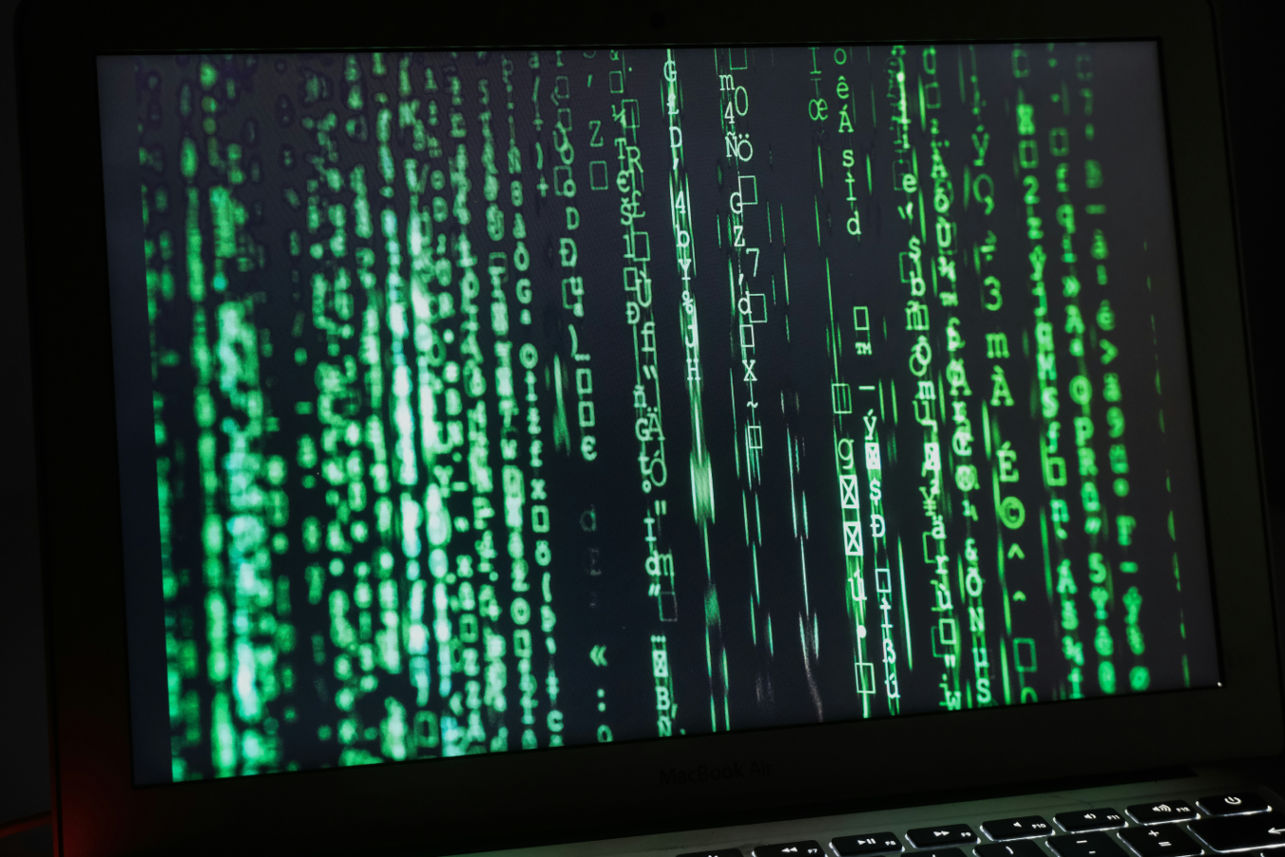 Security Updates
Security UpdatesTransitioning from Proxy Firewalls to Endpoint Security
Explore the evolution from proxy firewalls to endpoint security, enhanced threat detection, data encryption, and comprehensive protection for modern networks.
 Security Updates
Security UpdatesExpert IT Risk Assessment: Protect Your Business Today!
Mitigate potential IT threats with our comprehensive risk assessment guide, ensuring your digital infrastructure. Ensure your business is secure an...
 Security Updates
Security UpdatesEssential Guide to Best Practices in Compliance Security
Explore essential strategies for compliance security in this comprehensive guide. Learn about safeguarding your business and meeting regulatory sta...
 Security Updates
Security UpdatesSecure Your Data with Expert Cloud Database Solutions
Learn efficient solutions and secure your cloud databases with encryption and compliance features, ensuring data safety and privacy across all plat...
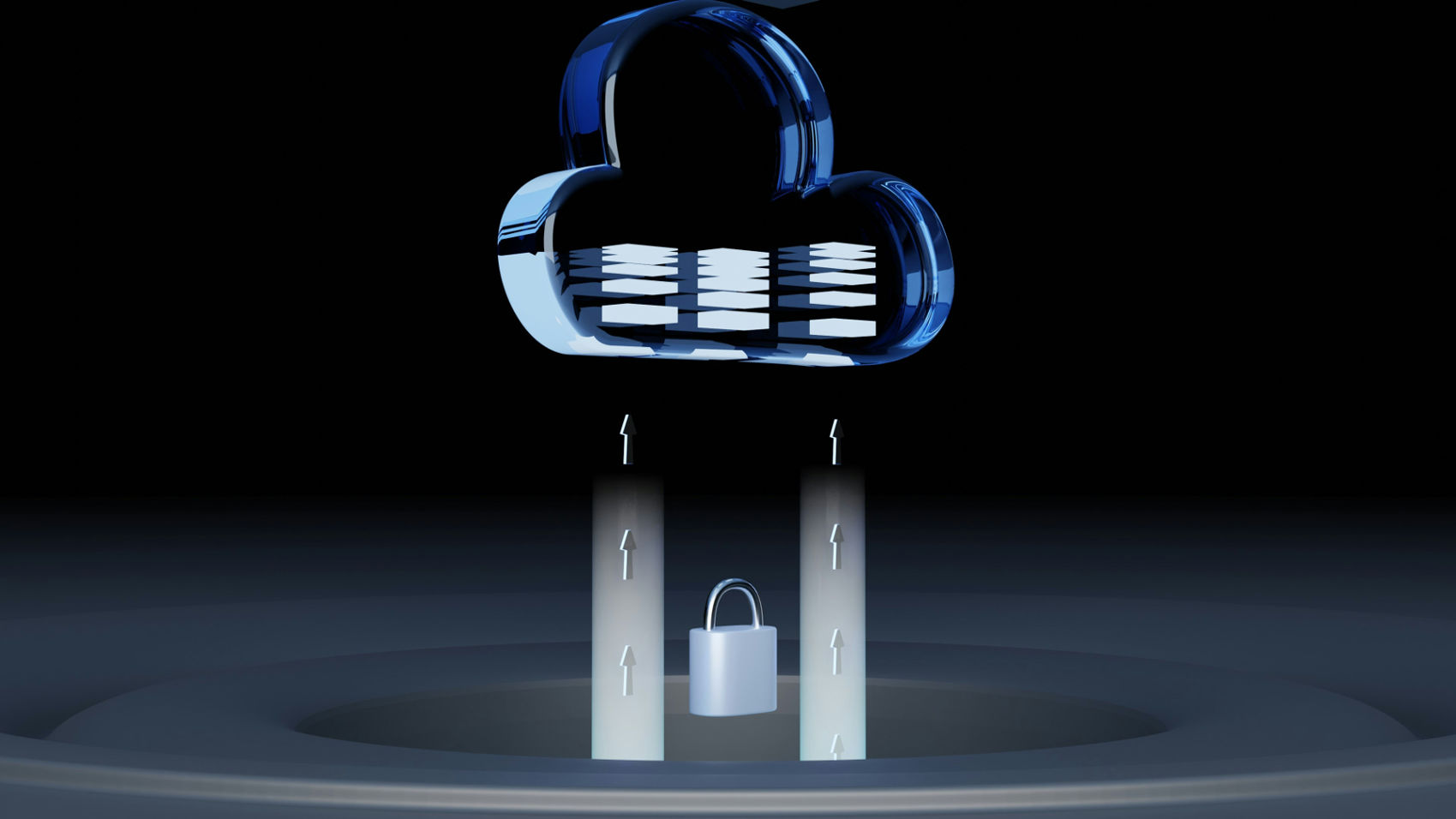 Security Updates
Security UpdatesA Guide to Cloud Network Technology: Benefits and Types
Unlock the potential of cloud network technology for seamless connectivity. Learn and scale solutions that drive business innovation and growth via...
 Security Updates
Security UpdatesAffordable Managed IT Services for Small Businesses
Explore top-managed IT services for small businesses to boost efficiency and security. Get expert insights and practical tips to optimize your IT o...
 Security Updates
Security UpdatesSecure Your Network with Gateway Security Solutions
Explore the essentials of gateway security: learn about its importance for network protection and best practices to safeguard your digital assets e...
 Security Updates
Security UpdatesDisaster Recovery Testing: Ensure Business Continuity
Explore effective disaster recovery testing strategies in this guide to maintain business continuity, prevent data loss, and minimize downtime duri...
 Security Updates
Security UpdatesMaximizing Security: Vulnerability Management Lifecycle
Explore the complete guide to the Vulnerability Management Lifecycle to boost your cyber resilience and secure your business IT infrastructure effe...
 Security Updates
Security UpdatesYour Network with Endpoint Security Management
Explore our comprehensive guide on Endpoint Security Management to understand its importance, how it works, and best practices for robust network s...
 Security Updates
Security UpdatesEnsuring Security Compliance: Tips, Insights & Strategies
Discover the essentials of security compliance, its importance, frameworks, and tools. Learn how to protect data and meet regulatory standards effe...
 Security Updates
Security UpdatesBoost Your Security with Internal Penetration Testing
Dive into internal penetration testing with our in-depth guide. Learn the essentials, techniques, and best practices to fortify your cybersecurity ...
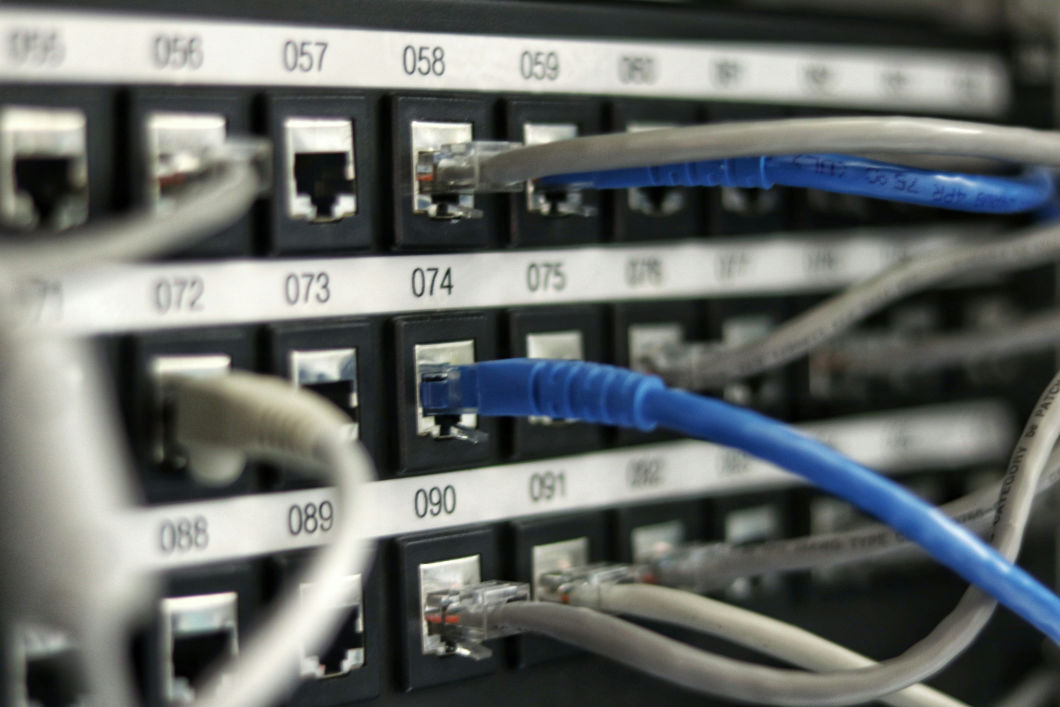 Security Updates
Security UpdatesEgress vs Ingress: A Guide to Data Traffic Management
Understand Egress vs Ingress in data management. Learn and explore their roles, traffic analysis, risks, and best practices for network and cloud s...
 Security Updates
Security UpdatesPrevent Credential Harvesting to Protect Your Precious Data
Understand credential harvesting. Learn how it works, common techniques, its impact, and strategies to prevent and mitigate attacks to secure your ...
 Security Updates
Security UpdatesSecure Your Big Data: Top Solutions for Data Security
Protect your valuable data with our robust big data security solutions. Learn about the threats and Safeguard against cyber threats and ensure comp...
 Security Updates
Security UpdatesSecure Your Network with Advanced Management Solutions
Explore the details of comprehensive network security management: Learn key strategies, best practices, and tools to safeguard your digital environ...
 Security Updates
Security UpdatesGuide to On-Path Attacks: Protecting Your Cybersecurity
Learn about on-path attacks in this comprehensive guide, exploring definitions, types, consequences, and key prevention strategies to safeguard you...
 Security Updates
Security UpdatesExploring Managed Cloud Services: A Comprehensive Guide
Dive into the Managed Cloud Services with our in-depth guide. Explore benefits, types, and best practices to enhance your business's cloud strategy...
 Security Updates
Security UpdatesComprehensive Guide to Ubiquitous Computing: Impact & Future
Explore the details of ubiquitous computing, from its core concepts and layers to its societal impact, key technologies, applications, and future p...
 Security Updates
Security UpdatesClone Phishing Explained: Detection and Prevention Guide
Discover how clone phishing works and its impact. Learn effective strategies to identify, prevent, and respond to these sophisticated email threats...
 Security Updates
Security UpdatesHow to Secure Your Business with Cyber Security Insurance
Explore the essentials of Cyber Security Insurance, covering its importance, types of coverage, benefits, and considerations for businesses in the ...
 Security Updates
Security UpdatesEfficient Data Spooling Solutions For Streamlined Operation
Learn How To Efficiently Manage And Store Your Data With Our Reliable Data Spooling Services. Keep Your Information Organized And Accessible With T...
 Security Updates
Security UpdatesMaximizing Compliance & Risk Management: Expert Strategies
Learn how to ensure business success with effective compliance and risk management strategies. Explore definitions, differences, frameworks, and ch...
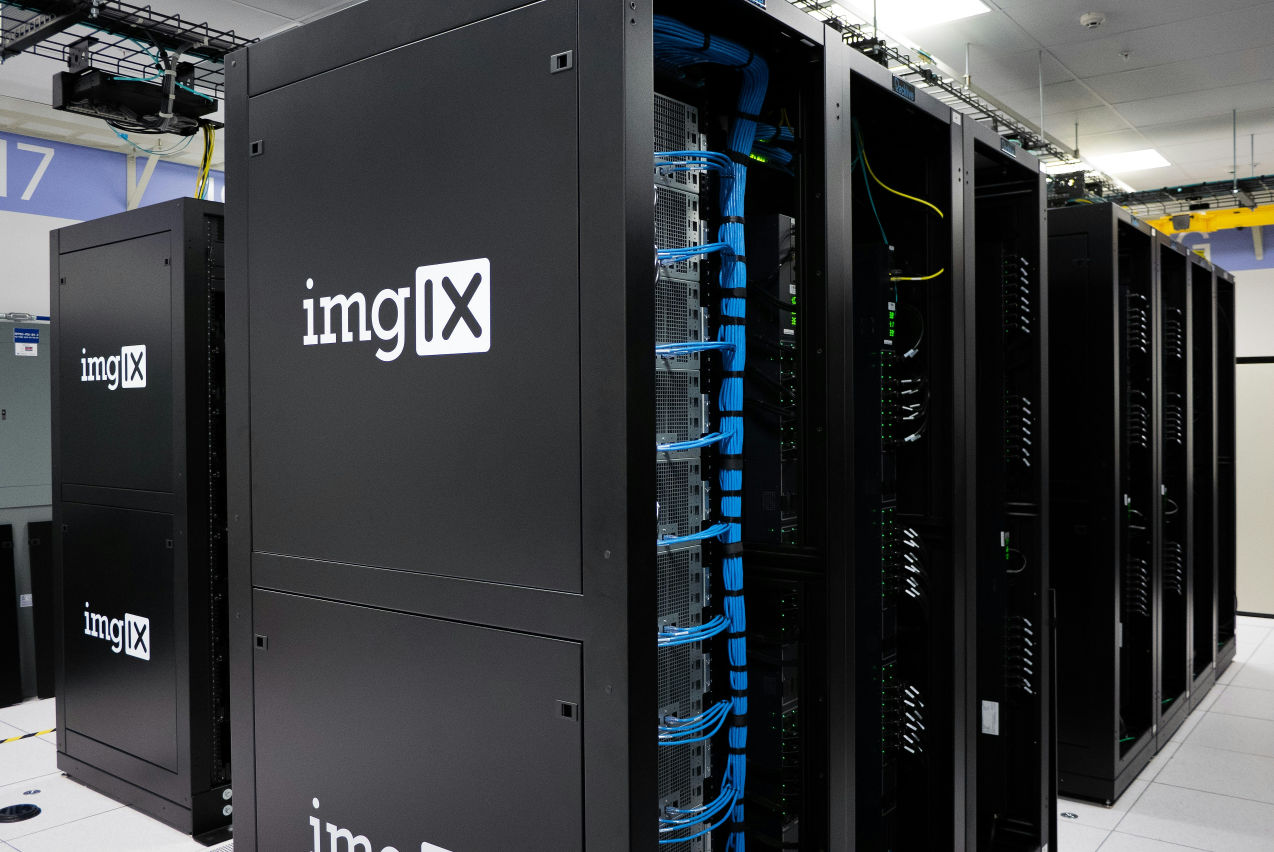 Security Updates
Security UpdatesUnderstanding MDF vs IDF: Key Differences & Benefits
Explore the crucial differences and examples between MDF and IDF in networking, understanding their roles, functions, and impact on network infrast...
 Security Updates
Security UpdatesRedZone Wins CRN's Top Security 100 & MSP 500 Awards 2024
RedZone Technologies earns CRN's Security 100 & MSP 500 Awards, affirming its leadership and innovative approach in the cybersecurity and IT manage...
 Security Updates
Security UpdatesJames Crifasi Speaks on Cybersecurity at Tech Conference
Join James Crifasi, CTO & COO of RedZone Technologies, at the Tech Conference as he explores cybersecurity's role in driving business growth and ad...
 Security Updates
Security UpdatesRedZone's James Crifasi Wins SonicWall's Technical Hero Award
CTO James Crifasi of RedZone Technologies earns SonicWall's Technical Hero of the Year, exemplifying unparalleled dedication to cybersecurity and I...
 Security Updates
Security UpdatesHow to Encrypt Email in Outlook
Learn how to encrypt email in Outlook with our step-by-step guide. Secure your messages using S/MIME, Office 365 Encryption OME, and add-ins for pr...
 Security Updates
Security UpdatesWhat Is Security Monitoring? Importance and Tools
Explore the importance of security monitoring, its key roles, types, and how it protects organizations against threats, ensuring compliance and pro...
 Security Updates
Security UpdatesServer 2012 R2 End of Life: Implications and Next Steps
Learn about Server 2012 R2 end of life: Understand its impact, key dates, risks post-EOL, and explore upgrade options and migration strategies for ...
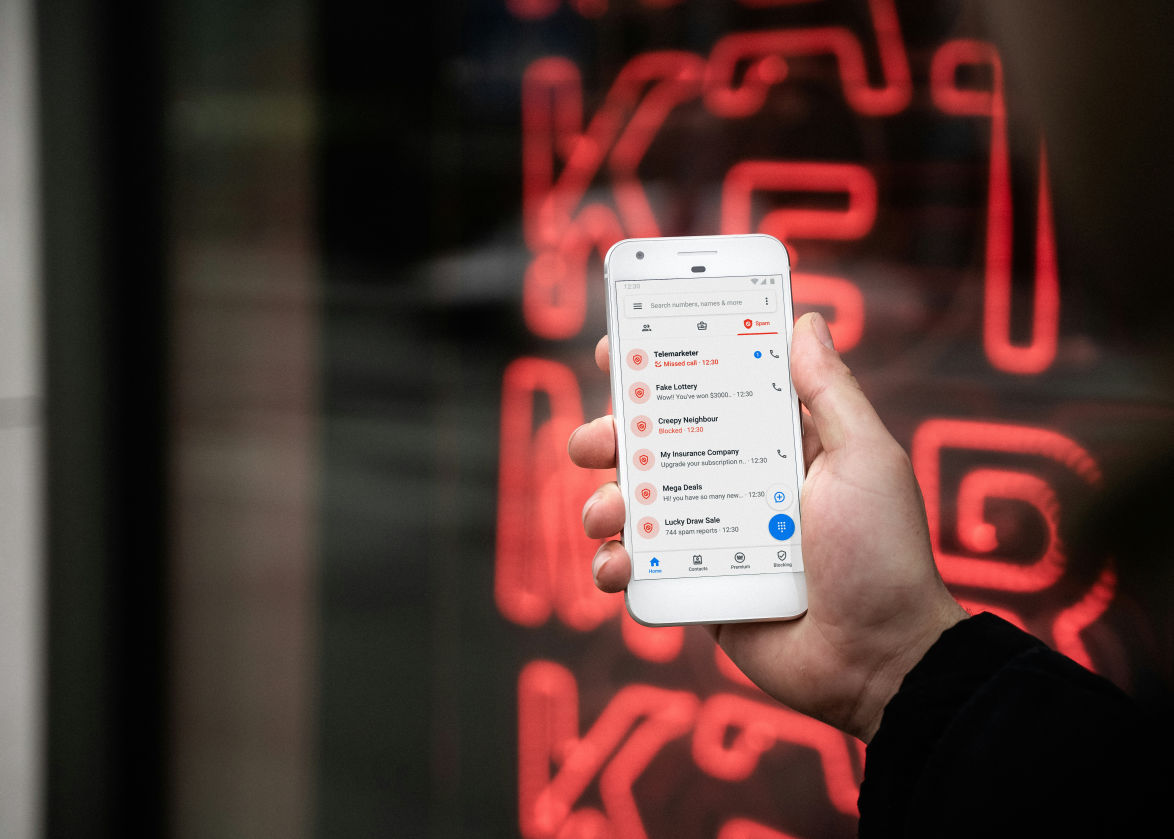 Security Updates
Security UpdatesProtect Personal Data: Smishing and Phishing Prevention
Know how to identify and protect against smishing and phishing attacks. Learn the techniques, types, and preventive measures for personal and busin...
 Security Updates
Security UpdatesSmurf Attack Guide: Prevention & Detection Strategies
Explore prevention & recovery from Smurf Attacks: Understand DDoS defense, detection signs, and secure network practices in our detailed cybersecur...
 Security Updates
Security UpdatesWhat is a Bad USB Attack, and How Do You Prevent It?
Learn about Bad USB attacks, their various forms, and strategies for safeguarding devices. Learn how to mitigate risks with effective prevention te...
 Security Updates
Security UpdatesKey Differences Between DOS Attack vs DDOS Attack
Explore the key differences between DDoS vs DoS attacks, their types, impacts, and prevention strategies in our comprehensive guide to enhance cybe...
 Security Updates
Security UpdatesUnderstanding the Impact of a Ping of Death Attack
Explore the ins and outs of Ping of Death attacks. Understand how they work, their impact on networks, and strategies to prevent them to keep your ...
 Security Updates
Security UpdatesThe Power of the Human Firewall: Your First Line of Defense
Discover the critical role of the human firewall in cybersecurity, combining employee vigilance with technology to protect against cyber threats ef...
 Security Updates
Security UpdatesStateful Firewall vs. Stateless Firewalls: What's the Difference?
Learn the key differences between stateful and stateless firewalls and how they protect your network. Discover the right choice for your security n...
 Security Updates
Security UpdatesUnderstanding the 4 Levels of PCI Compliance
Explore PCI DSS Compliance with RedZone: Key steps to protect card data and ensure secure transactions. Learn about compliance levels and tips for ...
 Security Updates
Security UpdatesWhat Is a Security Breach and How to Prevent Them
Learn how to effectively guard your business against security breaches with RedZone Technologies. Discover simple steps to keep your data safe and ...
 Security Updates
Security UpdatesUnderstanding Tailgating in Cybersecurity
Understand tailgating attacks in cybersecurity: what they are, how they work, and effective strategies for prevention to keep your business...
 Security Updates
Security UpdatesWhat is a Managed Service Provider and Its Benefits
Explore the role of Managed Service Providers (MSPs) in enhancing IT efficiency and cybersecurity for businesses, covering benefits, servi...
 Security Updates
Security UpdatesBreach Prevention: 5 Best Practices to Protect Your Data
Learn about data breaches: what they are, their impact, and how to prevent them. Explore best practices for securing your business against cyber th...






